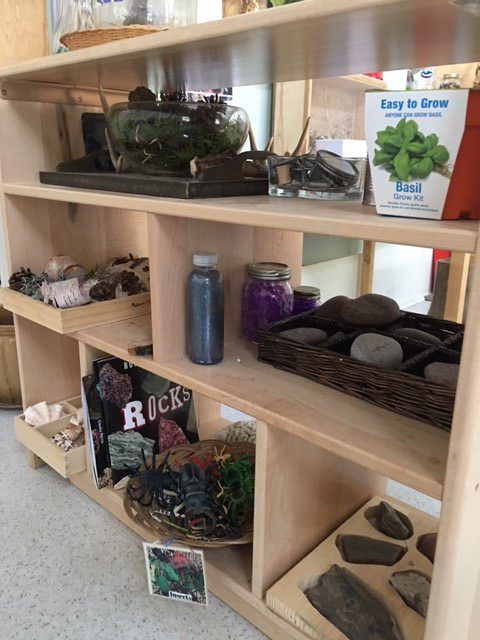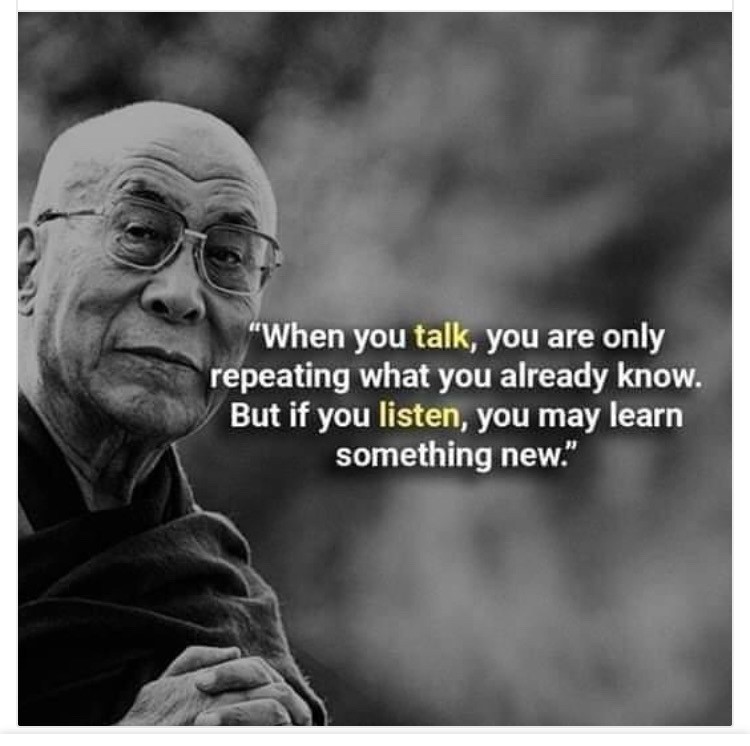
Dalai Lama Quote


A Child Care program who was able to provide Emergency Child Care services in Kingston writes, “We were apprehensive about parents not being permitted to come into into the centre, however, the staff found effective ways to use electronic communication with families (notes/photos etc.) so not seeing their child’s teacher face to face was not an issue at all; in fact we have received so much positive feedback from families that they feel very involved and informed about what is happening at the centre even though they have not set foot indoors” (Ontario, 2020, p.3)!
What are some ways that you can invite feedback from and engage with families while maintaining physical distancing?

The Building on How Does Learning Happen? document states that “Involving educators in planning for reopening right from the beginning, values their expertise and ideas and is critical for a successful reopening.” It further goes on to say that “Educators who experience being valued contributors will be better able to support children and their families during the re-opening transition” (Ontario, 2020, p. 3).
We want to know how you feel educators can be involved at your centre! Share your ideas below!
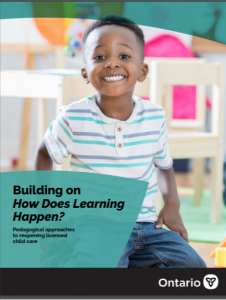
The Ministry of Education has released a new document to extend on How Does Learning Happen? titled Building on How Does Learning Happen?.
Click the link below for access:
http://www.edu.gov.on.ca/childcare/building-on-how-does-learning-happen-child-care.pdf
This PDF highlights the ways programs can continue to foster the Four Foundations during these times of change and uncertainty due to the COVID-19 pandemic. This document contains reflective questions, stories, and suggestions for programs of ways to continue to align with How Does Learning Happen? during these unprecedented times.
Please review the document and share it widely with your colleagues in the early years profession, and stay tuned as we will continue to post on our portal about Building on How Does Learning Happen? and offer some opportunities for our community to engage and share ideas and stories about pedagogy during the COVID-19 pandemic.
Families attending child care may choose to provide expressed breast milk or formula for their child(ren). When this is the case, staff must ensure that they are storing and serving these items safely and hygienically.
According to p.7 of How Does Learning Happen?, “Families love their children and want the best for them. Families are experts on their children. They are the first and most powerful influence on children’s learning, development, health, and well-being. Families bring diverse social, cultural, and linguistic perspectives. Families should feel that they belong, are valuable contributors to their children’s learning, and deserve to be engaged in a meaningful way.” Supporting families’ decisions around feeding fosters all of the Four Foundations (Belonging, Well-Being, Engagement, Expression).
Below are two resources that can be shared with all staff who may serve breast milk to children about how to safely and hygienically store and serve breast milk. These resources can easily be posted in the programs as a visual reminder for educators on the guidelines around storing and preparing breast-milk. The source of this information is the Best Start resource Breastfeeding Matters (L’allaitement ça compte) and the second resource is also from Best Start, Expressing and Storing Breast Milk.
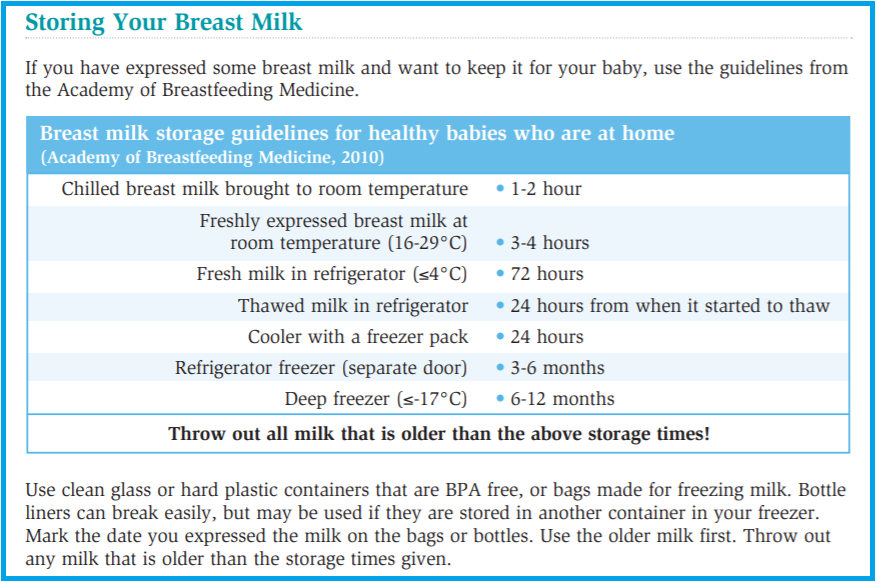
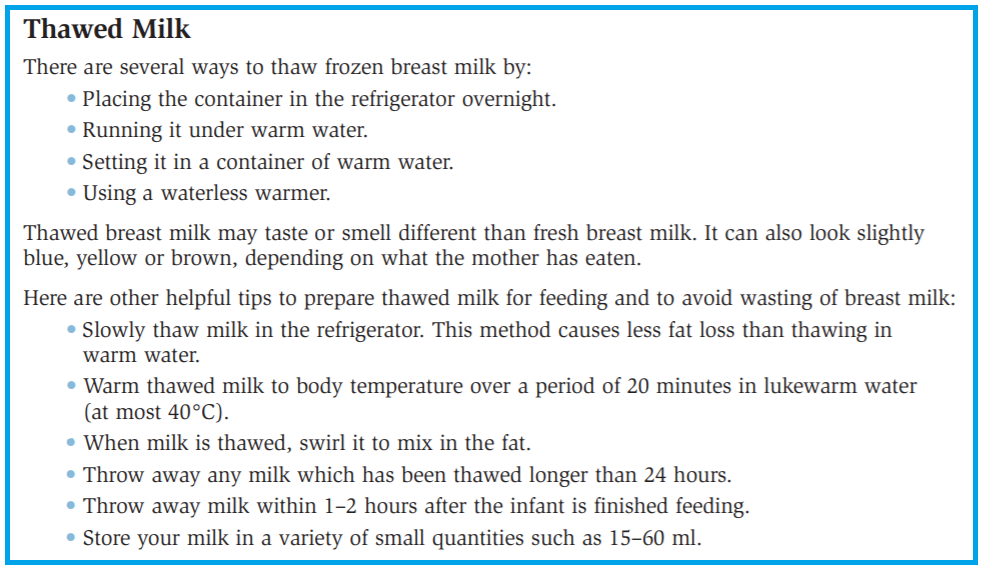
Families may also choose to provide infant formula for their child at child care. The instructions for preparing and serving formula are included on the packaging. Here is a resource from Best Start called Infant Formula: What You Need to Know. This resource has information about safely and hygienically preparing, serving, and storing formula.
If programs or staff have additional questions about feeding, how to safely store breast milk, they can view the above PDFs for free at the link provided, or contact the Thunder Bay District Health Unit. Be sure to also check out the Best Start website for other resources for families at your centre on child health and development.
I had the pleasure of attending a presentation given by two educators at Schoolhouse Playcare Centre. These educators shared an interesting journey that they’ve had in the preschool room about doors. It was incredible to see how the educators extended this interest and acted as co-learners with the children.

The two educators truly embraced the inquiry process. Through their observations, they determined the children were curious about doors. They planned for new ways of exploring doors throughout the program such as in the art and blocks areas, and they created documentation to educate families and community members about the learning, interests, and questions they’ve been exploring. Some exciting highlights were:
Thank you for the hard work you are doing with the children and families at Schoolhouse Playcare Centre. You have truly fostered the four foundations throughout this journey and it’s great to see the creative ways that families have been engaged along the way. Additionally, thank you to Wanda for inviting me to attend this presentation; attending these types of events is one of the best ways for us to build positive relationships with educators.

We had an incredible time with everyone who came out to the HDLH Bus Tour on Saturday. Child care and EarlyON educators mingled together, shared ideas, observed, inquired, and (best of all) enjoyed some WHEELY awesome bus jokes!
Thank you to everyone who participated, and to all of those who helped to make this event possible. A special thank you to the four operators who took part in our planning committee and offered to host the tour at their centres. An additional thank you to our incredible bus driver, Kirk, who was a team player and kept us laughing all throughout the day!
The first stop was at the Sherbrooke EarlyON where we were inspired by the many ways to incorporate loose parts into the environment. Educators looked closely around the environment, and many were inspired by the bulletin board that read “WHAT DOES PLAY MEAN TO YOU?”
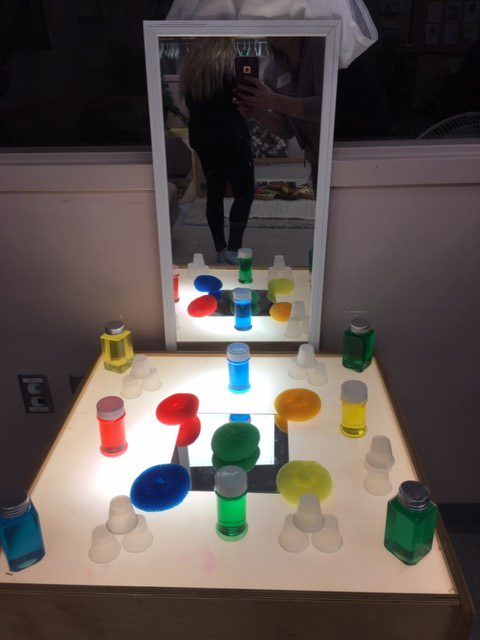


Next, we headed to Rural Roots where the educators had presented a multitude of displays and invitations to play. Several educators took a liking to the way natural elements and real materials were used to extend classic learning opportunities. For example, using a real log for the Five Green and Speckled Frogs.
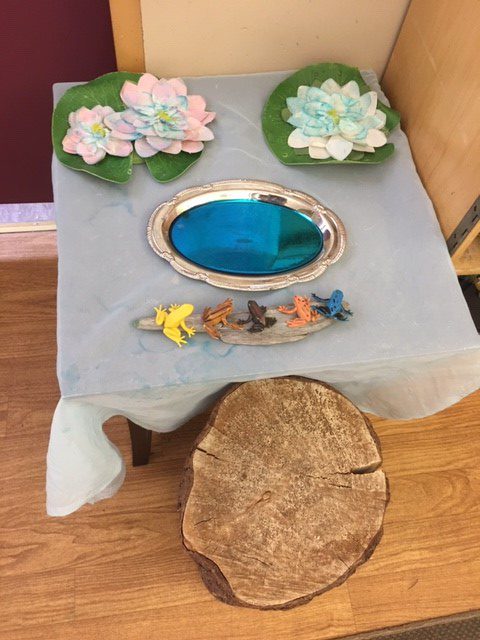
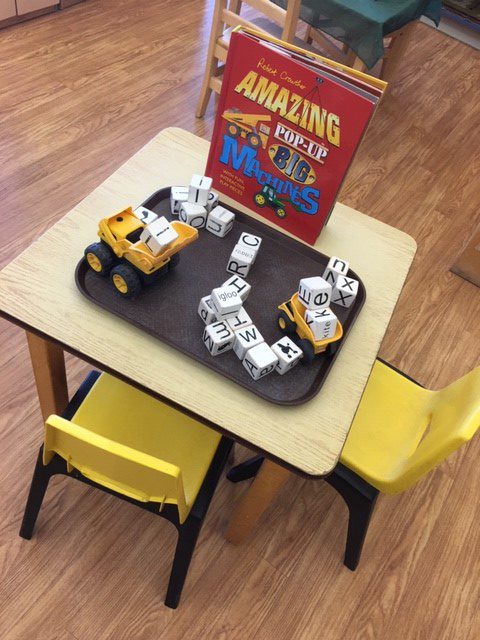

We FUELED the educators up with lunch, and headed to our next stop – Abiinojiishiik-amino-yawook. Here, educators were offered a traditional experience through a smudging and drumming ceremony that was followed by an opportunity to taste bannock and cedar tea. Miigwetch!
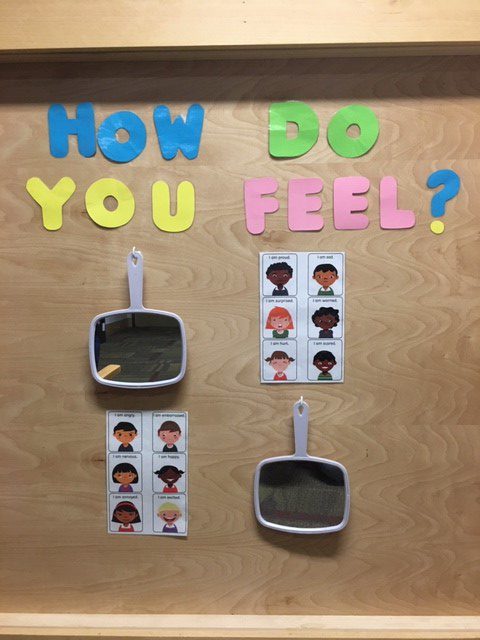
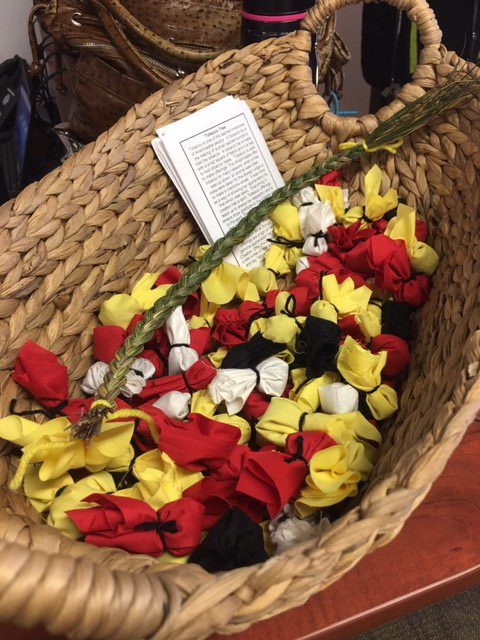

Last, but not least, we arrived at Nanabijou. Here, the educators from Nanabijou were excited to share their talents with us. As we made our way through the centre, we discovered the concept of ateliers and observed new ideas for incorporating nature into the program.




Below is a snapshot of some of the learning that took place throughout the day:
“I was able to gain a new understanding of how educators foster the 4 foundations through materials and how to extend children’s learning through the use of loose parts”
“I enjoyed how the EarlyON Centres celebrate their families and I feel I can build upon these ideas and traditions.”
“I really enjoyed the indigenous teachings. I will be able to bring these new ideas back to our program and learn with our families.”
“Documentation doesn’t have to be difficult, it can be very simple.”
“Great to see different views. Can we network more often?”
Child care and EarlyON educators had a lovely time this week at the Supporting Sacred Teachings Make and Take. A special thank you to Lynda Banning, FASD Regional Program Worker with Anishinabek Nation, who shared her knowledge and culture with us. We appreciate your guidance and support as we work to provide inclusive and respectful environments for young children.
Some of the highlights from the workshop were when Lynda shared with us teachings about the medicine wheel, allowed us to explore the four medicines, and provided materials to create tobacco ties. Additionally, Lynda talked about the Seven Grandfather Teachings and how we can teach children honesty, humility, love, respect, truth, bravery, and wisdom. To compliment the Seven Grandfather Teachings, the educators created stones to represent these sacred teachings that can be used throughout their programs. For example, educators might use these stones for storytelling, teaching, or displaying. There are endless possibilities for these beautiful and special manipulatives. See the photos below for some of the amazing creations from the workshop.
Thanks again Lynda. The resources, support, and teachings you’ve provided are infinitely valuable in providing programming that fosters the Four Foundations (belonging, engagement, well-being, and expression).
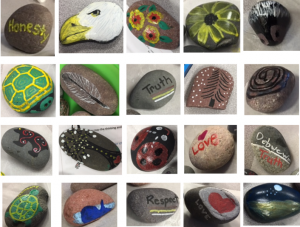
Here are some book suggestions provided by Lynda:
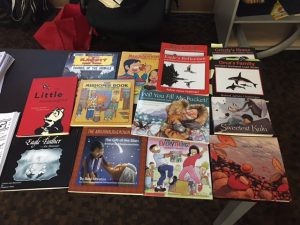
We had a blast at the Yuck Science workshop this morning with Emily Kerton, Senior Scientist at Science North. Emily provided us with many great icky, sticky, and gooey ideas to share with the children, along with some fun vocabulary – viscosity, scat, and non-Newtonian fluid.
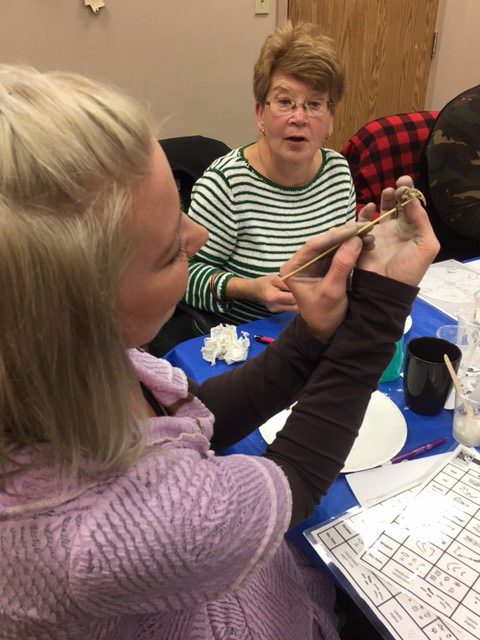


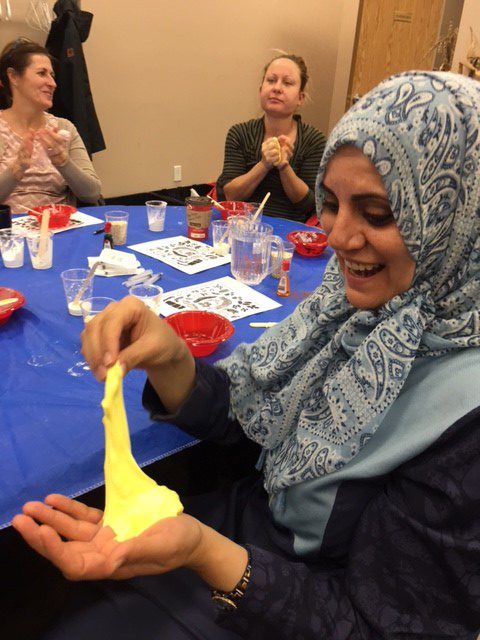


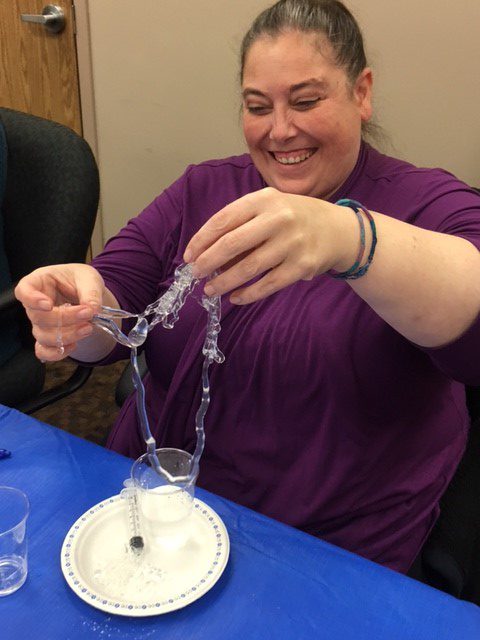
See the Educator Resources page for some great resources to share with educators and families!
There is a lot of fantastic work happening in our community and there is no shortage of talent and creativity among our early years sector. Have a look at some of the amazing activities below that are engaging the minds of young learners throughout the District of Thunder Bay. Consider how these activities reflect the four foundations of How Does Learning Happen.
As an example, the foundation Engagement encourages educators to facilitate opportunities for children to learn through exploration, play, and inquiry. Furthermore, “the environment plays a key role in the quality of children’s exploration and play. Indoor and outdoor spaces, materials, and furnishings (including how they are positioned), accommodations to ensure equitable learning opportunities and participation for children with special needs, as well as the general design of the space, and the organization of time, all have a significant influence on children’s level of engagement and the possibilities for in-depth exploration and learning” (HDLH, 2014, p. 36).
We encourage you to reflect on your programs using the questions below. Additionally, you may be interested in sharing these at a staff meeting or having educators reflect in a journal. We also welcome you to share your reflections with us if you would like us to reflect with you.
Questions for Reflection:
